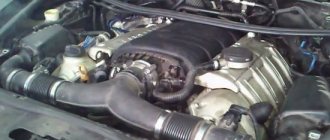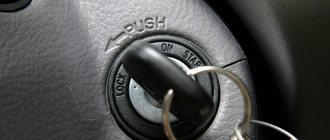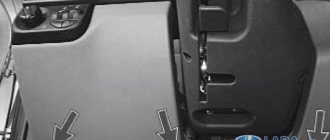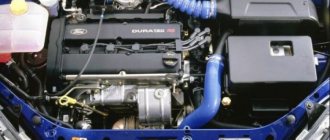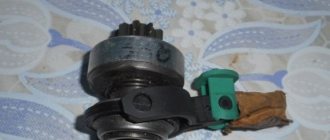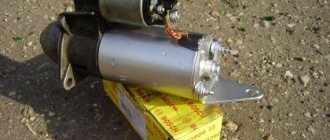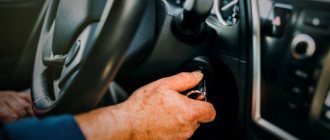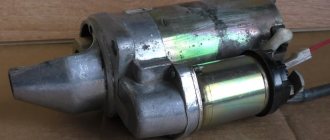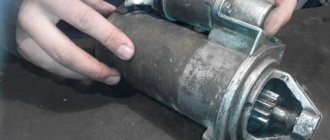Hi all! I need help identifying the problem, I’ll write what I’ve already done:
Started the car from autostart ( alligator s825
), drove by, turned it off. I start it with the key, the starter does not turn. I try autostart, the ignition turns on, the starter does not turn. In the cabin, the relay clicks when you try to turn the starter (possibly in the alarm system). No clicks are heard from under the hood. I googled it, checked the battery terminals, everything is fine, reset them, no result. I checked the KG, when you turn the key to the starter, +12 appears on the purple wire. I checked the 30A voltages at the signaling, they are normal. I haven’t checked the lilac wire that controls the starter yet; there should be a + on it when trying to autostart, or just from the key. I couldn't find a fuse on this lilac wire. It may be a coincidence that the problem appeared as soon as it got colder. I tried to close the contacts on the starter, but it didn’t work, or I closed it the wrong way. It’s inconvenient to get there... Tell me what could be wrong, and how to close the starter directly?
PROBLEM SOLVED! I DECIDED TO CLOSED THE CONTACTS ON THE RETRACTER WITH A SCREWDRIVER, AN EXPERIENCED GUY DRIVED UP IN A NEXIA N100, SHOWED WHERE TO LOCK IT, IT STARTED. HE RECOMMENDED LOOKING FOR AN BREAKDOWN TO THE CONTROL WIRE WITH A PULL-IN RELAY. IT IS CONTROLLED BY A SIGNAL. IT TURNS OUT THAT THERE WAS A + OR NOT ON IT (THICK LILAC WIRE FROM THE POWER CONNECTOR OF THE AUTO START CONTROL). WHEN I CLOSED TO THE LILAC WIRE ON KG 30 CONTACT KG, BYPASSING THE SIGNAL, THE STARTER TWISTED. I CHECKED THE 30A SIGNAL CONNECTORS, INTEGRATED. I INSERTED THE PLUG TIGHTER, REPLACED THE WIRES, EVERYTHING BECAME NORMAL. I'M BLAMING EITHER A LOOSE CONTACT IN THE SIGNAL PLUG, OR THE BUILT-IN RELAY IN THE SIGNAL.
The Daewoo car is one of the most successful options for budget cars. Like any other car, Nexia models are equipped with many different mechanisms that interact with each other. Read below about what the Daewoo Nexia starter is and what malfunctions are typical for this device.
Features of the starter on Daewoo cars
On Daewoo cars, including Matiz and Lanos models, the starter performs a fairly important function. In particular, when the driver turns the key in the lock, the battery begins to transmit voltage to the device. The starter turns at the moment when a magnet begins to act on it, as a result of which it begins to connect with the power unit. The engine starts as a result of ignition of the fuel-air mixture.
If you look at the starter of a Daewoo Matiz or any other car model, you will see that it visually looks like a four-pole electric motor. The unit itself is combined with a planetary mechanism, as well as an electromagnetic two-winding relay.
Interaction of parts with each other
As stated above, when you turn the ignition key on a car, that is, when the key moves to the third position, voltage is supplied from the battery to the traction relay. The relay is equipped with a so-called armature, which moves the drive lever. As a result, the clutch gear meshes with the gear element of the power unit flywheel. At this moment, the armature also closes the power contacts and the electric motor of the unit begins to transfer charge to the battery. Next, the rotor of the device will turn the crankshaft of the motor through the placental gearbox.
Do-it-yourself repair of Daewoo Nexia
The Daewoo Nexia is a modern, reliable car, which, however, may also need repairs. There are breakdowns that are best repaired at a car service center, but some faults can be easily corrected on your own. Let's try to figure out in what cases the Daewoo Nexia may need to be repaired with our own hands and how to carry it out correctly.
Troubleshooting the fuel pump
If the Daewoo Nexia engine begins to work unstably or the car simply refuses to start, then this may be due to a breakdown of the fuel pump, which can be easily corrected on your own.
To return the part to its functionality, you need to remove it from the bracket, and then remove the filter and hose. Next, take a screwdriver, straighten the folding and remove the lid.
In the removed cover there is a recess where you need to place a metal plate. This element can be made from scrap materials, the main thing is that it has the appropriate size. After this, the lid should be placed in its rightful place.
These simple manipulations make it possible to restore the tightness of the fuel pump, however, if after carrying out this procedure this part is not restored, then it can be replaced with a corresponding element from a GAZ or VAZ car .
Do-it-yourself repair of the Daewoo Nexia brake cylinder
A brake pedal that is too soft indicates a faulty brake cylinder, which can be replaced or repaired yourself. To repair a part with your own hands, you need to stock up on:
- keys 10, 12, 13 and 22;
- a bulb or syringe designed for pumping out brake fluid;
- screwdriver;
- pliers;
- brake fluid.
First, pump out the brake fluid using a bulb or a special syringe. Next, release the rear wheel pressure regulator cylinder using a 22 key.
Basic starter malfunctions
So, what to do if the car does not start and what to do if the starter does not turn? First, of course, you need to understand the main malfunctions of the unit.
- It is impossible to start, although the ignition key is in position III, but the driver does not hear a characteristic click, and the unit itself refuses to turn. As a rule, such a breakdown is associated with a failure of the solenoid relay. However, first of all, you still need to make sure that the battery in the car is charged and working. In this case, it would not be superfluous to check the terminals on the battery - if they are oxidized, they will need to be cleaned. Sometimes a similar problem occurs when the ground cable is poorly secured to the car body; the wire itself may be damaged. If everything is in order with this, you will need to make sure that voltage is supplied to the contact of the relay of the node itself. Diagnostics is carried out using a multimeter or a 12-volt test lamp. If the battery works normally, but the unit still does not turn, the cause of the malfunction must be sought in the ignition switch. Otherwise, the cause of the malfunction will be the operation of the traction relay.
- When starting the power unit, the driver may hear a characteristic click, but still do not twist the unit. In this case, the cause of the malfunction may be a malfunction of the solenoid relay, sticking or wear of the brushes, or failure of the armature commutator. But at the same time, you also need to make sure that the battery is working normally, the ground is securely fastened, and the battery terminals are not oxidized. In addition, it would be a good idea to check whether the terminals on the starter itself are properly tightened; we are talking about a permanent plus, as well as the control contact of the relay.
- The engine starts, but the unit turns with great difficulty. In this case, the cause of the malfunction, as a rule, is wear of the mechanism bushings or contamination of the commutator; cleaning the latter or replacing the bushings will solve the problem. In addition, the problem may be a short circuit or breakage of the armature windings, as well as wear of the brushes. If necessary, the brushes can also be replaced.
- The unit rotates normally, but the flywheel does not turn. Such a malfunction may be due to incorrect operation of the bendix, in particular, the drive gear. The failure may also be caused by a broken drive fork.
- The mechanism turns, but the flywheel does not turn, and an uncharacteristic sound is heard from the engine compartment, in the area of the gearbox housing - a squealing or crackling sound. The reason in this case may lie in the inoperability of the bendix or wear of the teeth of the flywheel crown.
- The unit continues to function after starting the power unit or turns on randomly while driving. If you can start, but the starter does not work correctly, the solenoid relay may have failed. In this case, the drive gear may also not disengage with the flywheel, or it may simply jam on the splines of the so-called anchor. Therefore, first of all, you need to spend time diagnosing these components. If everything is fine with them, then perhaps the cause of the malfunction lies in the contact group. If the starter itself turns weakly, you can find out more about options for solving the problem here.
Location and electrical diagram
The diagram of all electrical equipment in Daewoo Nexia cars 8 valves in the body of N100 and N150 1997, 1998, 2004, 2005, 2006, 2007, 2008, 2010, 2011 and 2012 is powered by a 12-volt battery. Connecting devices and devices in these cars follows the same principle. The negative terminals of electrical equipment are connected to ground, that is, to ground or the car body.
The devices are powered from two voltage sources:
- From the battery if the engine is not running and the ignition is on. Activation of the latter is not necessary if the equipment is connected to the battery not through the ignition switch, but directly.
- From the generator unit when the engine is running. When the power unit is started, the generator also recharges the battery, which allows you to replenish the previously used battery charge.
As for the location, in Daewoo Nexia 100 and 150 2005 and other years of production, the fuse box is installed in the lower part of the center console. It can be seen to the left of the control panel. Regardless of the year of manufacture and the body in which the vehicle is made, the position and placement of the mounting blocks, as well as their characteristics and the purpose of the parts are the same. The only difference lies in gaining access to these devices due to some design features of the center console.
Explanation of fuses
Fuse installation diagram
Let's move on to a description of safety components.
| # | Purpose |
| F1 | Designed to protect the electrical circuits of the control module. This part is considered one of the main ones, since the protection of the power unit control unit is assigned to it. If it burns out, problems with starting the engine may occur; the ECM system will not be able to fully perform all the functions assigned to it. |
| F2 | Protecting the circuits of the side light system in the car |
| F3 | The reserve element can be used when installing additional devices and equipment |
| F4 | Protects electrical circuits of high beam optics |
| F5 | Used to provide protection for the low beam optics, as well as the electric control for the left headlamp. If it breaks, the corrector will not work |
| F6 | This fuse also protects the low beam lighting in the car. He is responsible for the operation of the electric control of the right headlight |
| F7 | Fuel pump fuse. A malfunction of this part will lead to difficulties in starting the engine, and starting the engine will be impossible. Part replacement is required to ensure normal operation of the unit. In addition to the fuel pump, the fuse is used to protect the electrical circuits of the injectors |
| F8 | Safety device f8 protects the turn signal and brake light circuits. The failure of the part will result in the driver not being able to warn other motorists about the maneuver he plans to perform, which can lead to an emergency situation. It will not be possible to activate the light alarm. Driving a car with broken brake lights is dangerous. |
| F9 | The electrical circuits of the windshield cleaning and washing systems are assigned to this fuse. If the part breaks, the driver will not be able to supply water from the expansion tank to the glass, as well as activate the wiper blades |
| F10 | Used to protect the electrical wiring of the fuel filler cap |
| F11 | Ensures the functionality of the air conditioner compressor relay. Installed only on vehicles equipped with an air conditioning system |
| F12 | This fuse protects the electric cooling fan. Failure of a part can lead to overheating of the power unit, since the operation of the fan will be disrupted |
| F13 | Fuse f13 is used to protect several components of the electrical circuit at once. We are talking about the dashboard, digital clock in the center console, cigarette lighter, buzzer. The device also protects the circuits of the reversing headlights, which are activated when the corresponding gear is engaged, the generator unit, as well as the rear window heating system. Failure of a part will lead to the failure of a piece of electrical equipment immediately. The performance of the generator is especially important for the circuit. |
| F14 | This part protects the circuits of the steering horn and the electric fan of the cooling system. We are talking about an increased speed device, which is activated in case of emergency overheating of the internal combustion engine. |
| F15 | Used to ensure the functionality of lighting sources in the cabin and luggage compartment, as well as the electric drive of the antenna |
| F16 | This fuse protects the wiring through which the power windows are connected to the battery. If these elements are manual, then the nest remains free |
| F17 | Protection of the audio system connected through the ignition switch. Failure of a part will result in the inability to use the radio. |
| F18 | This component also protects the audio system only if it is connected directly to the battery. In addition, the fuse protects the rear window heating system, central locking and tailgate opener. |
| F19 | Overvoltage protection of the circuit section responsible for the operation of the stove |
| F20 | Anti-fog optics |
User Denis West in his video talked about how to solve the problem in Nexia if the backlight on the instrument panel has gone out.
Relay type and purpose
In Daewoo Nexia 8 and 16 valves, there are also relays in the safety block. Read about their purpose below.
| № | Purpose |
| K1 | Power unit cooling system fan. This element, like fuse f14, helps prevent failure of the ventilation device. Otherwise, the motor may overheat |
| K2 | This relay is assigned to protect the light sources installed in the headlights. If the turn signal is broken, it will be impossible to operate, as will the light alarm. |
| K3 | Used to protect the electrical circuit section of the fuel pump. If the engine cannot be started, the battery is charged and the starter turns normally, you need to check the functionality of the part |
| K4 | This relay is assigned to protect the front and rear fog lights. |
| K5 | Side lights and fog lights |
| K6 | The electrical circuits of the headlight lighting sources are attached to this part. Operation of low and high beam headlights is possible only if this relay is operational |
| K7 | Also responsible for the operation of the cooling system ventilation device. Relay failure will lead to overheating of the power unit |
| K8 | Air conditioning compressor clutch. If problems appear in the operation of the air conditioning system, the unit does not effectively cool the interior of the car or does not turn on at all, you need to check the functionality of the K8 relay |
| K9 | Responsible for the functionality of the horn |
| K10 | The part is assigned to protect the light sources of the headlights |
| K11 | Used to protect against overvoltage the section of the circuit to which the device emitting a melodic signal is connected. We are talking about sounds that indicate the optics are on when the doors are opened and seat belts are not fastened. Not all units are equipped with such a relay, only the corresponding configuration |
| K12 | The part is secured with protection for the fourth speed of the stove ventilation device. A failure of the relay will lead to the fact that in severe frost the heating system will not be able to properly warm up the interior of the car. |
| K13 | Responsible for the functioning of the ignition system. If the device breaks down, you will not be able to start the engine. |
| K14 | This relay is assigned to protect the electrical circuits of the windshield cleaning system. If the wiper blades and washer system are damaged, they will not work. |
| K15 | Responsible for the functionality of the rear window defroster timer |
Difference between Nexia N100 and N150
There are no differences in the fuse blocks in cars with N100 and N150 bodies. All elements in the devices are located absolutely identically and have the same purpose.
User Expert R spoke in his video about how to solve the problem with safety devices if the cooling fan does not turn on.
The starter does not turn, but the relay clicks
This morning I encountered the following symptoms:
I start to start the car, but the starter does not turn. You can clearly hear the relay clicking in the hood. After 7-8 attempts, the starter finally turned on, turned the engine, and the car started. In the evening after work, the story repeated itself in a cold car.
The fuel pump is working, the battery is charged.
PS Since last summer there was a problem that sometimes a hot car started up as if it was TINY, something like when the battery is discharged, i.e. The starter turns the engine heavily and reluctantly. But somehow it didn’t bother me much.
Apparently the “legs grow” from the same place. What could it be? Bendix? retractor relay?
Required Tools
To replace the starter on a Nexia, you need a list of tools, which is presented in the table below.
Table - Tools required to replace the front strut
| Name | Note |
| Head | "at 10", "at 13" |
| Extension | Preferably with a ratchet |
| Short open-end wrench | "at 10", "at 13" |
| Screwdriver | With cross and flat blade |
| Socket wrench | “at 7”, “at 8”, “at 10”, “at 13”, “at 15” |
| Rags | To clean dirt |
To remove and install the starter, access is required from the bottom of the vehicle. Therefore, when carrying out operations, it is important to have an inspection hole, overpass or lift.
The starter does not turn, but the relay clicks
This morning I encountered the following symptoms:
I start to start the car, but the starter does not turn. You can clearly hear the relay clicking in the hood. After 7-8 attempts, the starter finally turned on, turned the engine, and the car started. In the evening after work, the story repeated itself in a cold car.
The fuel pump is working, the battery is charged.
PS Since last summer there was a problem that sometimes a hot car started up as if it was TINY, something like when the battery is discharged, i.e. The starter turns the engine heavily and reluctantly. But somehow it didn’t bother me much.
Apparently the “legs grow” from the same place. What could it be? Bendix? retractor relay?
There was such a problem, I did something wrong with the retractor, but in the end it turned out that the terminals on the battery had just oxidized, I shook the positive terminal on the battery, and since then there have been no problems.
Daewoo Nexia N150 fuse and relay diagram
Most of the electrical circuits in a Daewoo car are protected by fuses. Powerful consumers of electricity (headlights, cooling fan motor, fuel pump, power steering, etc.) are connected via a relay.
The information is relevant for Daewoo Nexia N150 models after 2008.
The fuses and relays for the two models Daewoo Nexia N150 and N100 are similar and differ only in access to the mounting block.
To access the fuses and relays, you must remove the protective cover in the instrument panel.
On the inside of the mounting block cover there is a diagram of the location of fuses and relays installed on the outside of the block.
The rating of the fuses, the circuits they protect and the purpose of the relay are given in the tables.
Daewoo Nexia has external and internal fuse blocks:
Fuse and relay diagram on the outside of the mounting block.
Fuse and relay diagram on the inside of the mounting block.
Now you can list all the relays:
List and designation of circuits protected by fuses:
And finally, a short video about why a fuse can constantly fail.
